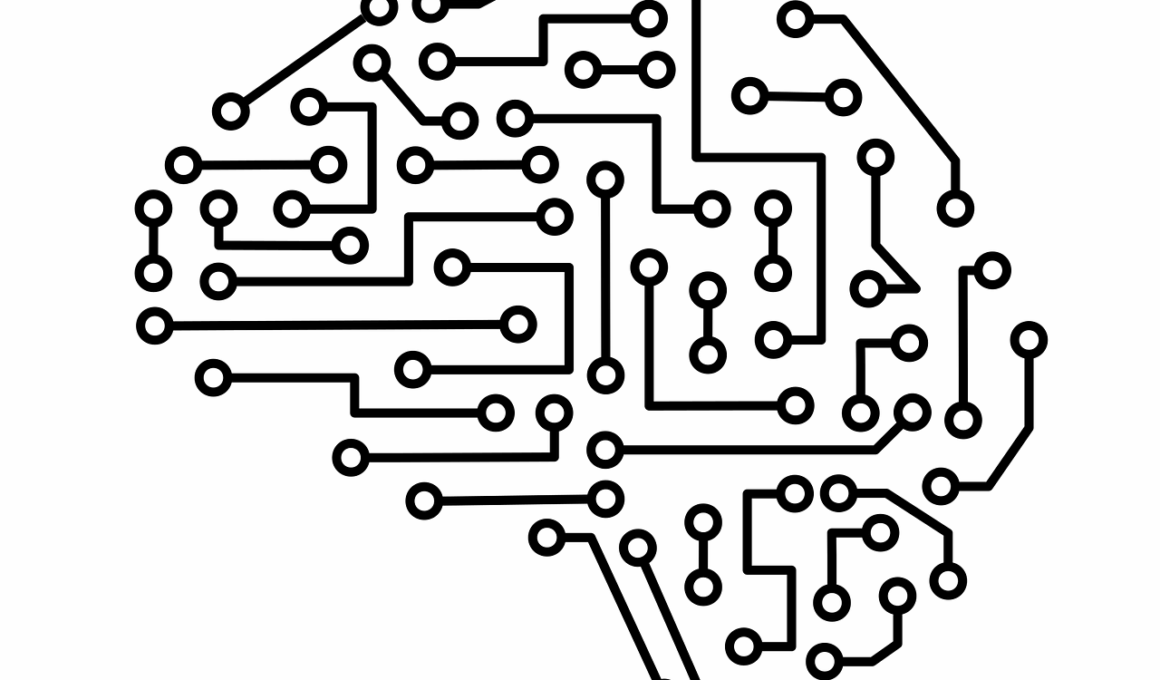Applying Deep Learning to Match Outcome Predictions
In the realm of sports analytics, match outcome predictions represent a pivotal application of data science. Utilizing deep learning in this space allows analysts to leverage vast amounts of both historical and current data, significantly enhancing prediction accuracy. By integrating multiple data sources, including player statistics, team performance, and situational factors such as weather and location, models can uncover patterns that human analysts might miss. This ability to process enormous datasets through neural networks enables a deeper understanding of the dynamics at play during a match. Furthermore, the ability of deep learning models to adapt as new data becomes available ensures their continuous improvement in forecasting outcomes. However, developing such models requires a sound methodology, careful feature selection, and robust validation to ensure reliability. As analysts strive to predict match results, they must also navigate challenges in data quality and backlash from traditional methods. Stakeholders in sports from coaching staff to betting companies increasingly seek these insights to bolster their strategies. Consequently, the intersection of sports analytics and deep learning is an exciting area of growth and innovation, promising greater engagement and data-driven decision-making across the industry.
Incorporating deep learning techniques into match outcomes requires understanding various neural network architectures available. Each architecture, such as convolutional neural networks (CNNs) and recurrent neural networks (RNNs), serves unique functions within this context. For instance, CNNs are primarily utilized for image-based data, making them ideal for analyzing video footage of matches. RNNs, on the other hand, excel in analyzing sequential data such as time-series stats, which are crucial for forecasting match results. Analysts often combine these architectures within ensemble models, thereby leveraging the strengths of each. Implementing these approaches effectively requires a comprehensive database of player and match information, enriched with recent performance metrics to improve predictions. Additionally, preprocessing the collected data is vital to eliminate noise and irrelevant information that could skew results. Techniques such as normalization and one-hot encoding transform raw inputs into usable formats for deep learning algorithms. Beyond statistical techniques, domain knowledge in sports remains indispensable to interpret model outputs accurately and to make informed decisions. In a competitive environment, the convergence of technology and advanced analytics drives innovation, changing how teams prepare, perform, and evaluate performance metrics. These developments signal an exciting future ahead in sports analytics.
Data Preparation and Feature Engineering
The effectiveness of deep learning models in predicting match outcomes hinges on proper data preparation and feature engineering. At the core of this process is the selection of relevant variables that will be used as input for the models. This may involve identifying key indicators, such as goals scored, shots on target, and player injuries, which can significantly influence the outcome of a game. In working with historical data, analysts must ensure that they account for different leagues, match conditions, and even player formations to avoid biases. Properly cleaned data sets should be divided into training, validation, and testing subsets to evaluate model performance comprehensively. Moreover, employing techniques like cross-validation can enhance the model by providing insights into its predictive power across varied datasets. Observing trends related to specific teams and players over time can also provide deeper context to the outcomes. In this fast-evolving landscape, the integration of data science in sports holds transformative potential enabling teams to unlock the true value of their information. Therefore, innovative feature engineering is arguably one of the most critical steps to establish a reliable predictive model.
Once the data is prepared, model training takes place under specific parameters tailored to enhance performance. Many organizations deploy popular frameworks such as TensorFlow and PyTorch to facilitate the development of deep learning models. Analysts should use techniques like hyperparameter tuning to find the optimal settings for their models. Selecting appropriate loss functions and optimizers directly impact accuracy. The training process involves running multiple iterations through the dataset, allowing the model to learn from its mistakes in predicting match results. Observing training versus validation performance is crucial for avoiding overfitting, where the model performs well on known data but fails to generalize to unseen data. It emphasizes the need to strike a balance between model complexity and performance. The iterative nature of refining deep learning models fosters innovation and discovery of new insights into game dynamics. While the predictive power of these models is enticing, continuous evaluation, feature updates, and adjustments are necessary with the ever-changing nature of sports. Staying abreast of current trends enhances the ability to adapt models even further, reinforcing the importance of iterative processes along the journey.
Validation Techniques in Sports Analytics
To ensure the reliability of predictions generated by deep learning models, validation techniques are vital. One common method employed is k-fold cross-validation, where the dataset is split into ‘k’ subsets, training the model repeatedly with different subsets as validation data. This technique improves the robustness of models by exposing them to different data distributions. Another technique used is the train-test split, which separates historical data into training sets and evaluation sets. Adjusting model evaluation metrics, such as accuracy, precision, and recall, aids in interpreting outcomes while providing measurable success parameters. Additionally, employing confusion matrices allows analysts to visualize the effectiveness of predictions against the actual outcomes. These validation processes are essential in understanding how well a model performs, and they guide further refinements. Moreover, interdisciplinary collaborations with domain experts can lead to insights that improve the model’s reliability and help generate more strategic recommendations. Investing time in validation ensures that models remain relevant and aligned with the dynamics present in current sports, establishing confidence for stakeholders relying on these predictions.
The ethical ramifications of employing deep learning in predicting match outcomes warrant discussion, as they influence the trust placed in analytics by fans and stakeholders alike. Transparency in model design and decision-making processes becomes paramount to foster confidence among users. Public disclosure of methods ensures that the results produced are not only reliable but also acceptable by users. The potential for models to inadvertently favor certain players or teams raises concerns of bias. It is crucial for analysts to frequently assess feature selections and model behaviors to mitigate any unintended consequences. Furthermore, the implications for betting markets demand ethical considerations as well. Stakeholders must recognize the potential for misuse, such as game-fixing or manipulation, driven by over-reliance on predictive models. In this context, responsible data handling and ethical analytics practices can cultivate a culture of accountability that reinforces sports integrity. Dialogue around these issues enables deeper conversations on impacts of data science in professional sports. The ongoing ethical challenges reinforce the necessity for vigilance, particularly in an era where deep learning increasingly shapes the world of sports analytics.
The Future of Deep Learning in Sports
As technology continues to evolve, the future of deep learning in predicting match outcomes appears exceedingly promising. Advancements in machine learning algorithms and data collection methods open new avenues for sophistication within predictive analytics. For example, wearable technologies that gather real-time player performance data can seamlessly integrate with deep learning models, providing fresh insights and propelling match outcome predictions to new heights. The increased availability of data through digital platforms, social media, and sports analytics companies also enriches the datasets used in model training. Furthermore, with advancements in computational power, more complex models can be developed, improving accuracy levels significantly. Additionally, the sport industry is increasingly adopting predictive analytics to refine training regimens, tailor performance enhancements, and establish more strategic game plans. Moreover, collaboration between tech companies, sports teams, and academic institutions can generate innovative applications of analytics. Continuous exploration of new methodologies and technologies is essential to remain at the forefront of this field. Overall, the blend of deep learning and sports analytics represents an evolution that propels teams toward achieving higher performance standards, establishing deeper engagement with fans, and adapting to the dynamics of modern sports.
In conclusion, the synthesis of deep learning and sports analytics, particularly concerning match outcome predictions, reflects an era of transformation in sports. Leveraging sophisticated algorithms allows for unparalleled access to data-driven insights that can radically inform team strategies and enhance competitive dynamics. By embracing advanced methodologies and a framework built on data integrity, stakeholders can unlock valuable opportunities while navigating the challenges posed by rapid technological changes. Despite hurdles in achieving seamless integration and model deployment, pursuing academic and practical collaborations arms analysts with innovative strategies that yield meaningful results. Consequently, the implications for professional sports and fan experiences are vast and varied, setting the stage for future engagement between technology and athletics. This convergence heralds an era characterized by ongoing enhancements in data analysis techniques, offering potential new paradigms in performance and coaching. Ultimately, the integration of deep learning within sports analytics signifies a powerful tool that can shape the future of the industry, thus fostering a culture of continuous improvement, engagement, and performance excellence across various sporting domains.


